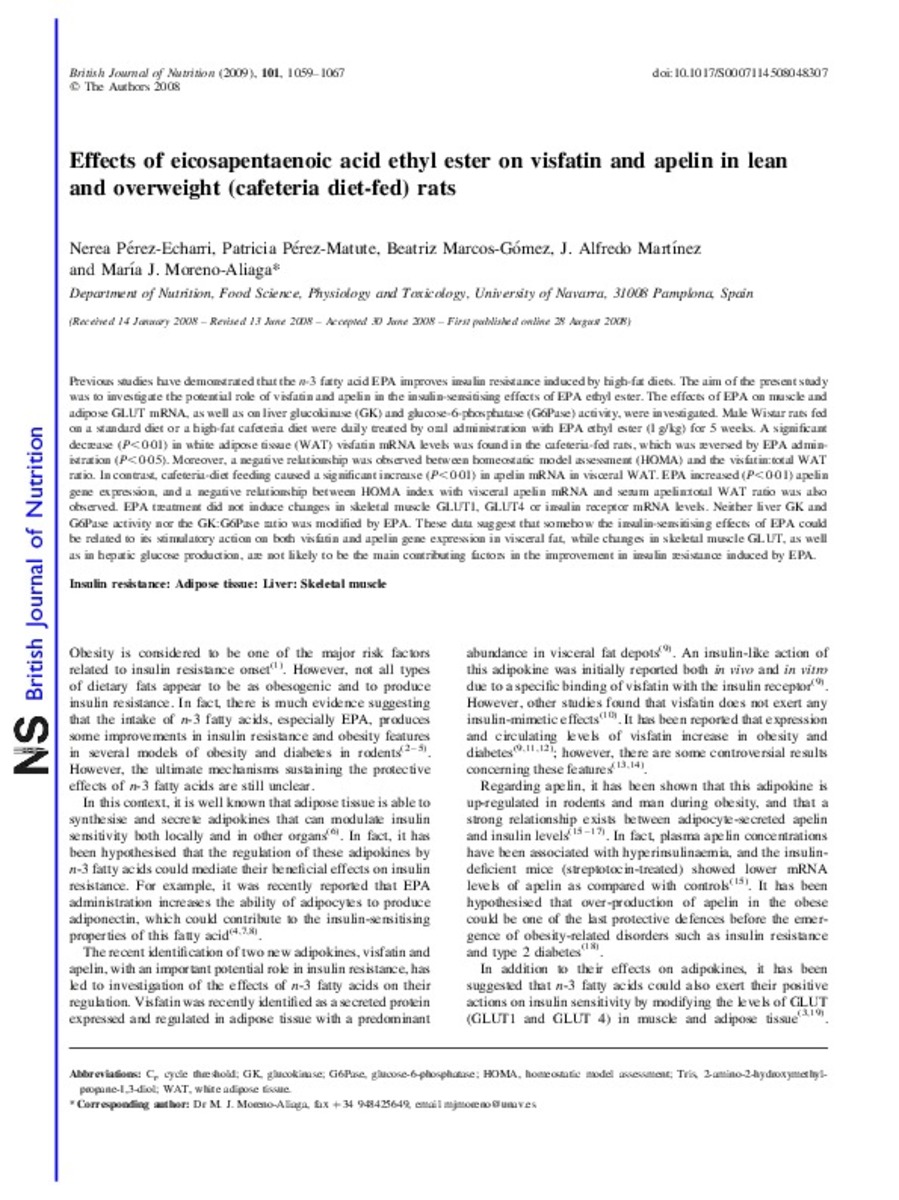Effects of eicosapentaenoic acid ethyl ester on visfatin and apelin in lean and overweight (cafeteria diet-fed) rats
Palabras clave :
Materias Investigacion::Ciencias de la Salud::Diabetes e hipertensión
Materias Investigacion::Ciencias de la Salud::Endocrinología
Fecha de publicación :
2009
Editorial :
Cambridge University Press
Cita:
Perez-Echarri N, Perez-Matute P, Marcos-Gomez B, Alfredo Martinez J, Moreno-Aliaga MJ. Effects of eicosapentaenoic acid ethyl ester on visfatin and apelin in lean and overweight (cafeteria diet-fed) rats. Br.J.Nutr. 2009 Apr. 14;101(7):1059-1067.
Aparece en las colecciones:
Estadísticas e impacto
0 citas en

0 citas en

Los ítems de Dadun están protegidos por copyright, con todos los derechos reservados, a menos que se indique lo contrario.








